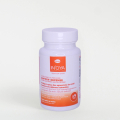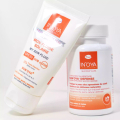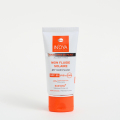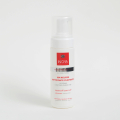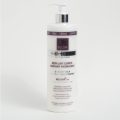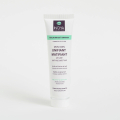Heat Rash: Why Does It Appear and How Can You Prevent It?
Heat Rash: What Exactly Is It?
Heat rash, also known as miliaria or prickly heat, is a skin condition that occurs when sweat gets trapped under the skin. This leads to the appearance of small red or white bumps that itch, tingle, or even burn.
In dark, brown, and mixed skin tones, these lesions require special attention as they have a high risk of post-inflammatory hyperpigmentation (PIH), leaving behind persistent dark spots if not properly treated.
Why Does Heat Rash Appear?
Heat rash occurs when sweat ducts (tiny tubes that carry sweat to the skin’s surface) become blocked, preventing sweat from evaporating normally. This causes sweat to build up under the skin, leading to local inflammation.
Main causes of this obstruction include:
- Extreme heat and humidity (tropical climates, heatwaves)
- Tight or synthetic clothing that prevents the skin from breathing
- Buildup of sweat, dead skin cells, and impurities that clog pores
- Intense physical activity in a hot environment
Most affected areas: face, neck, back, chest, skin folds (armpits, under the breasts), and areas in contact with tight clothing or underwear.
What Are the Risks if Left Untreated?
Although usually benign, heat rash can lead to complications such as:
- Post-inflammatory hyperpigmentation (PIH): In darker skin types (IV to VI), any inflammation can leave dark spots that are difficult to fade.
- Bacterial superinfection: Scratching these bumps may cause wounds and promote bacterial entry.
- Frequent recurrences if exposed to prolonged hot and humid conditions.
How to Effectively Prevent Heat Rash?
Prevention relies on three essential steps:
1. Cleanse the Skin Gently and Thoroughly
Regular cleansing with mild keratolytic agents like salicylic acid helps remove excess sebum, sweat, and dead skin cells that block pores. For sensitive skin, soothing ingredients like aloe vera or colloidal oatmeal help calm irritation without damaging the skin barrier.
2. Choose Breathable and Appropriate Clothing
Opt for loose clothing made of natural fibers (cotton, linen) that allow the skin to breathe. Avoid synthetic fabrics and tight undergarments that promote sweat buildup.
3. Protect the Skin from External Aggressions
UV exposure can worsen inflammation and increase the risk of dark spots. Daily use of a broad-spectrum sunscreen (SPF50) enriched with antioxidants (vitamin E, licorice extract, niacinamide) is strongly recommended, even for darker skin tones.
4. Strengthen the Skin from Within
Dietary supplements containing zinc, selenium, and antioxidant vitamins (C, E, beta-carotene) help protect the skin from oxidative stress and support its natural repair mechanisms.
5. Maintain Good Hydration
Well-hydrated skin is more resilient against external aggressors. Use non-comedogenic moisturizers and drink plenty of water to avoid skin dehydration.
Key Takeaways
Heat rash is not inevitable. By adopting a suitable routine and preventive measures, you can reduce its occurrence and protect your skin from spots and irritation.
To effectively prevent heat rash, discover our sunscreens designed for dark, brown, and mixed skin tones.
Discover Our Sunscreen Products
Learn the essential steps to soothe outbreaks, avoid scarring, and restore healthy skin.


